Biotechnological strategies for effective remediation of polluted soils
52
%
2029 Kč 4 200 Kč
Sleva až 70% u třetiny knih
Chapter 1. Soil pollution: causes and consequences.- Chapter 1.1. Introduction.- Chapter 1.2. Causes of soil pollution.- Chapter 1.2.1. Natural sources.- Chapter 1.2.1.1. Volcanic eruptions.- Chapter 1.2.1.2. Earthquakes.- Chapter 1.2.1.3. Alterations in rainfall patterns.- Chapter 1.2.1.4. Geographical changes.- Chapter 1.2.1.5. Tsunami. .- Chapter 1.2.2. Anthropogenic sources.- Chapter 1.2.2.1. Solid wastes.- Chapter 1.2.2.2. Agricultural practices.- Chapter 1.2.2.3. Radioactive wastes.- Chapter 1.2.2.4. Chemical wastes.- Chapter 1.2.2.5. Mining and smelting.- Chapter 2. Ex situ soil remediation strategies.- Chapter 2.1. Introduction.- Chapter 2.2. Land farming.- Chapter 2.3. Biopile.- Chapter 2.4. Windrow.- Chapter 2.5. Soil washing.- Chapter 2.6. Composting.- Chapter 2.7. Bioreactor.- Chapter 2.8. Ion exchange.- Chapter 2.9. Absorption/adsorption.- Chapter 2.10. Pyrolysis.- Chapter 2.11. Ultrasonic technology .- Chapter 3. In situ soil remediation strategies.- Chapter 3.1. Physical methods.- Chapter 3.1.1. Physical remediation.- Chapter 3.1.2. Physical separation.- Chapter 3.1.3. Soil flushing.- Chapter 3.1.4. Volatilization.- Chapter 3.1.5. Froth flotation.- Chapter 3.1.6. Thermal remediation.- Chapter 3.1.6.1. Electrical resistance heating (ERH) .- Chapter 3.1.6.2. Steam injection and extraction.- Chapter 3.1.6.3.Conductive heating.- Chapter 3.1.6.4. Radio-frequency heating (RFH) .- Chapter 3.1.6.5. In situ vitrification (ISV) .- Chapter 4. Chemical methods.- Chapter 4.1. Introduction.- Chapter 4.2.Chemical leaching.- Chapter 4.3.Chemical fixation.- Chapter 4.4.Chemical oxidation.- Chapter 4.5. Electrokinetic remediation.- Chapter 4.6. Biochar and soil remediation.- Chapter 5. Introduction.- Chapter 5.1.1. Carbon sequestration.- Chapter 5.1.2. Nutrient exchange.- Chapter 5.1.3. Water holding.- Chapter 5.1.4. Adsorption/ absorption.- Chapter 5.1.5. Oxidation/reduction.- Chapter 5.2. Biochar-microbe interaction in soil.- Chapter 6. Soil remediation through microbes.- Chapter 6.1. Introduction.- Chapter 6.2. Microbial degradation of petroleum hydrocarbons.- Chapter 6.3. Bioventing.- Chapter 6.4. Bioleaching.- Chapter 6.5. Bioaugmentation.- Chapter 6.6. Mycoremediation.- Chapter 7. Soil remediation through algae, plants and animals.- Chapter 7.1. Introduction.- Chapter 7.2. Phycoremediation.- Chapter 7.3. Phytoremediation.- Chapter 7.3.1. Rhizofiltration.- Chapter 7.3.2. Transformation.- Chapter 7.3.2.1. Degradation.- Chapter 7.3.2.2. Volatilization.- Chapter 7.3.2.3. Stabilization.- Chapter 7.3.3. Phytoextraction/phytoaccumulation.- Chapter 7.3.4. Phytomining.- Chapter 7.3.5. Phytostimulation.- Chapter 7.4. Genetic engineering approaches for phytoremediation.- Chapter 7.5. Animal remediation.- Chapter 8. Nanobioremediation.- Chapter 8.1. Introduction.- Chapter 8.2. Properties of nanoparticles.- Chapter 8.3. Types of nanomaterials.- Chapter 8.3.1. TiO 2 (Titanium dioxide) based nanoparticles.- Chapter 8.3.2. Iron Based Nanoparticles.- Chapter 8.3.3. Bimetallic Nanoparticles.- Chapter 8.3.4. Nanoclays.- Chapter 8.3.5. Nanotubes.- Chapter 8.3.6. Dendrimer and nanosponges.- Chapter 8.3.7. Magnetic nanoparticles 8.4. Green synthesis of nanoparticles for soil remediation.- Chapter 8.5. Nnaobioremediation. - Chapter 9. Case studies and future prospects.- Chapter 9.1. Case studies on soil remediation.- Chapter 9.2. Future prospects.
| Autor: | Koul, Bhupendra |
| Nakladatel: | Springer, Berlin |
| Rok vydání: | 2019 |
| Jazyk : | Angličtina |
| Vazba: | Hardback |
Mohlo by se vám také líbit..
-

Meteorologie
Klose, Brigitte
-

Kurzlehrbuch Psychiatrie
Bandelow, Borwin
-

Pilates - A Teachers' Manual
Geweniger, Verena
-

Erste Hilfe - Chemie und Physik für M...
Schatz, Jürgen
-
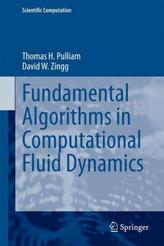
Fundamental Algorithms in Computation...
Pulliam, Thomas H.
-

Der Luzifer-Effekt
Zimbardo, Philip G.
-

Deutsch für Pflegekräfte
Schrimpf-Oehlsen, Ulrike
-

Professional Sitecore 8 Development
Wicklund, Phil
-

DBT-A- Manual
Fleischhaker, Christian
-

Unternehmenskultur fördern
Abbate, Sandro
-
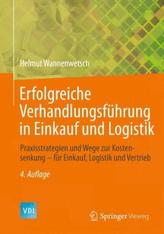
Erfolgreiche Verhandlungsführung in E...
Wannenwetsch, Helmut H.
-
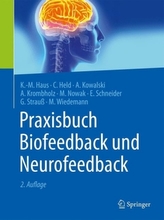
Praxisbuch Biofeedback und Neurofeedback
Haus, Karl-Michael
-

Einführung in die Soziologie
Schäfers, Bernhard
-
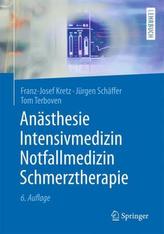
Anästhesie, Intensivmedizin, Notfallm...
Kretz, Franz-Josef
-

Sportkardiologie
Niebauer, Josef
-
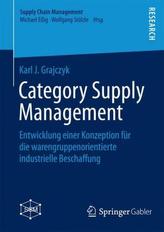
Category Supply Management
Grajczyk, Karl J.





